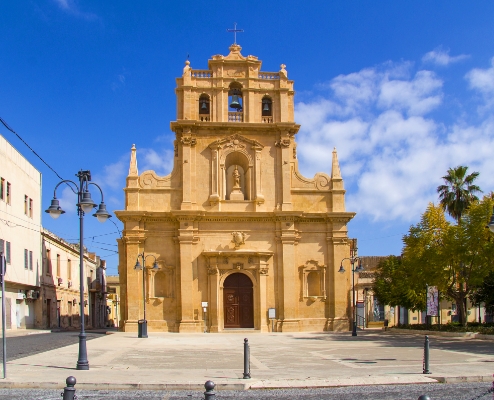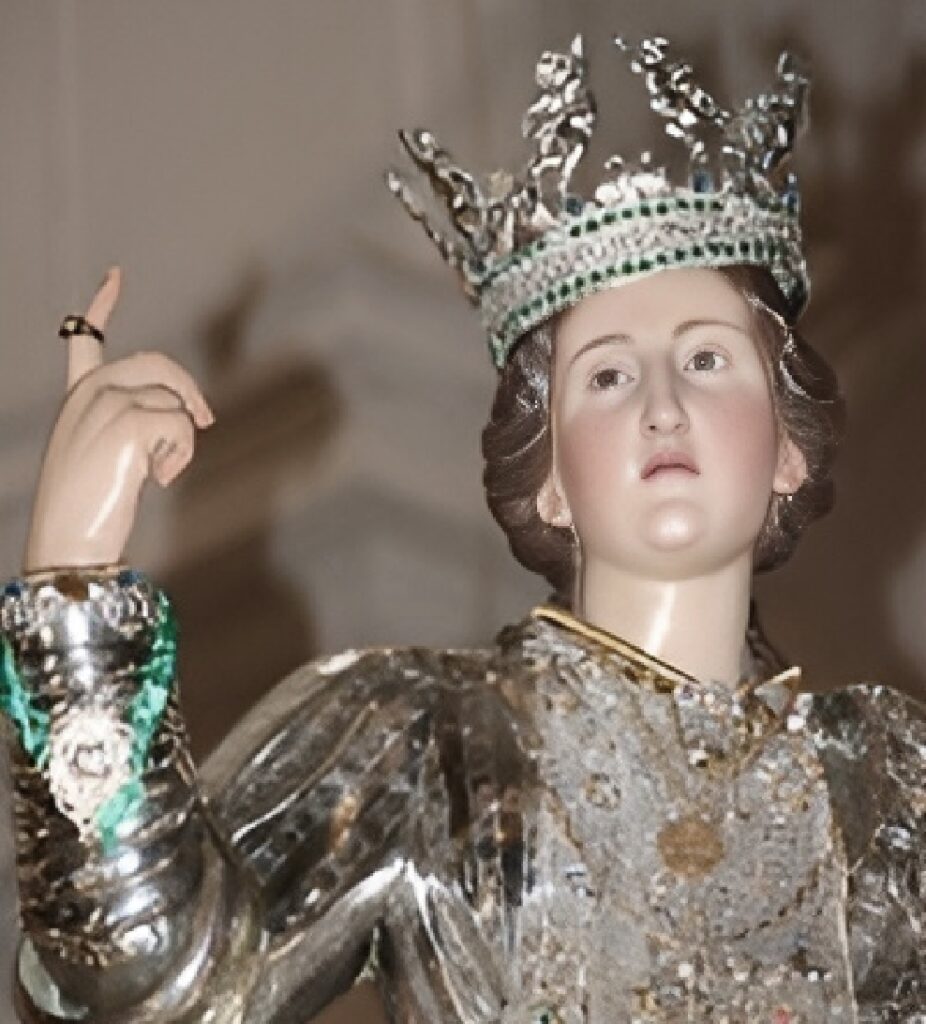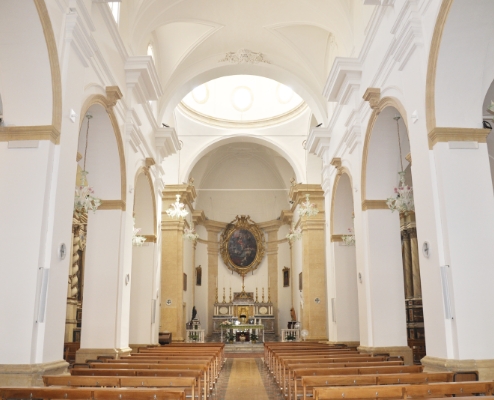Church of St. Venera
1713-first half 18th Century; dome 1962
Everyday 8.30-12 / 17-20.30

The fifteenth-century Church of St. Venera, the patron saint of Avola, was located in the Marchi district on the east side of the steep mountainside where Avola was once situated. The statue and the reliquary were saved from the ruins after the earthquake in 1693, and subsequently relocated to the church in the new site where the city was rebuilt with earthquake protection measures by the architect and engineer Angelo Italia. The church was built on the former Strada Cassaro (now Corso Garibaldi), and gave its name to one of the city’s four districts. It overlooked Piazza di S. Venera, which was renamed Piazza Teatro in the mid-nineteenth century.
The contract for building the church was signed in 1713, and the likely designer was the magister Michelangelo Alessi from Siracusa, who was already working on the city’s main church St. Nicolò.
The bright eighteenth-century façade is in white Hyblaean stone. The ground-floor level has four responds with Tuscan capitals, and two lateral niches with shell motifs and Rococo decorations. The central section is dominated by the portal, surmounted by a cartouche with subtle plays on perspective in the pilasters with Ionic capitals decorated with festoons. The second level is delimited by two obelisks and scrolls linking it to the upper level. There is a central niche with a stone statute of the patron saint underneath a split pediment and bas-relief sun with rays. The interior space is made to seem deeper by an oblique embrasure that extends the internal space by means of an optical illusion. The whole is topped by a triple-arch bell-chamber.
The church’s original dome collapsed in the earthquake of 11 January 1848 and was rebuilt on the original octagonal drum by engineer Luigi Cassone from Noto. In 1962 it was rebuilt to a project by engineer Pietro Lojacono (Palermo 1900-Roma 1972).
The interior of the church has three naves and is built on the plan of a Latin cross. The presbytery contains the main altar built in 1840 in a neoclassical style. The apse is dominated by an 18th-century painting featuring the Sermon of Saint Venera, attributed to Costantino Carasi (Noto 1717-1799) set in a splendid, finely worked oval Rocaille frame.
The chapel dedicated to St. Venera is on the right-hand side of the presbytery and houses a statue of the patron saint sculpted in Naples by Raffaele Abbate in 1863. The exterior in embossed and chased silver leaf with a dominant rose motif was made in Catania in 1864 by Emanuele Puglisi Caudullo. The chapel has delicate painted decorations with floral motifs and a fine majolica floor from 1827.

The church contains seventeeth-century paintings, including the altar piece featuring the Saints Crispin and Crispinian with the Virgin Mary, belonging to the ancient Corporation of Shoemakers, and Saint Martha. The paintings of the Holy Family on the altar of St. Joseph belonging to the Corporation of Carpenters, Jesus and Mary belonging to the Confraternity of the same name, Our Lady of the Rosary with saint Dominic and Dominican saints, and Saint Vincenzo Ferreri are from the eighteenth to the mid-nineteenth centuries. There is an interesting organ made by Michele Polizzi of Modica in 1901 and two aspersoria in Pitchstone from Ragusa, made in 1857.
The feast of the patron saint still features illuminations, decorated floats, concerts and plays and takes place between the last Sunday of July and the following eight days.

Explore the historic center of Avola!
Welcome to Avola, the hexagonal city! Explore the historic center.
Explore the historic center of Avola!
Welcome to Avola, the hexagonal city! Explore the historic center.
